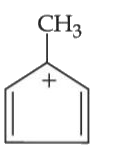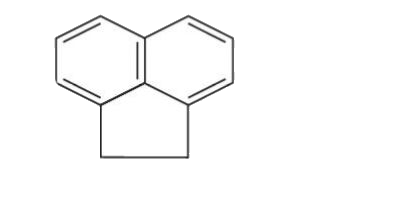Which one of the following compounds is aromatic in nature ?




To determine which compound is aromatic in nature, we need to follow a systematic approach based on the criteria for aromaticity. Here’s a step-by-step solution:
Step 1: Understand the Criteria for Aromaticity
A compound is considered aromatic if it meets the following criteria:
1. The compound must be cyclic.
2. The compound must be planar (all atoms should be in the same plane).
3. The compound must have a conjugated system of p-orbitals (typically sp² hybridized).
4. The compound must follow Hückel's rule, which states that the number of π electrons must be of the form 4n+2, where n is a non-negative integer (0, 1, 2, ...).
Step 2: Analyze Each Compound
Let's analyze the compounds one by one based on the criteria mentioned above.
1. Compound 1: Check if it's cyclic and planar. Count the π electrons. If it has 4 π electrons, it follows the 4n rule (anti-aromatic).
2. Compound 2: Check if it's cyclic and planar. Count the π electrons. If it has 6 π electrons, it follows the 4n+2 rule (aromatic).
3. Compound 3: Check if it's cyclic and planar. Count the π electrons. If it has 4 π electrons, it follows the 4n rule (anti-aromatic).
4. Compound 4: Check if it has any sp³ hybridized atoms. If yes, it is non-aromatic.
Step 3: Conclusion
After analyzing all compounds:
- If a compound has 6 π electrons and meets the other criteria, it is aromatic.
- If a compound has 4 π electrons, it is anti-aromatic.
- If it contains an sp³ hybridized atom, it is non-aromatic.
From the analysis, Compound 2 is the only one that meets the criteria for aromaticity.
Final Answer
The compound that is aromatic in nature is Compound 2.
---
A compound is considered aromatic if it meets the following criteria:
1. The compound must be cyclic.
2. The compound must be planar (all atoms should be in the same plane).
3. The compound must have a conjugated system of p-orbitals (typically sp² hybridized).
4. The compound must follow Hückel's rule, which states that the number of π electrons must be of the form 4n+2, where n is a non-negative integer (0, 1, 2, ...).
Let's analyze the compounds one by one based on the criteria mentioned above.
2. Compound 2: Check if it's cyclic and planar. Count the π electrons. If it has 6 π electrons, it follows the 4n+2 rule (aromatic).
3. Compound 3: Check if it's cyclic and planar. Count the π electrons. If it has 4 π electrons, it follows the 4n rule (anti-aromatic).
4. Compound 4: Check if it has any sp³ hybridized atoms. If yes, it is non-aromatic.
After analyzing all compounds:
- If a compound has 6 π electrons and meets the other criteria, it is aromatic.
- If a compound has 4 π electrons, it is anti-aromatic.
- If it contains an sp³ hybridized atom, it is non-aromatic.
The compound that is aromatic in nature is Compound 2.
Topper's Solved these Questions
Similar Questions
Knowledge Check
Which of the following compounds is aromatic in nature?
A B
B C
C D
D
Which one of the following compounds is diamagnetic in nature?
A[CuCl4]2−B[Ni(CN)4]2−C[Fe(CN)6]3−D[NiCL4]2−Which of the following compound is an Aromatic in nature ?
A B
B C
C D
D
Which of the following compounds is not aromatic ?
View SolutionWhich one of the following compounds is not aromatic ?
View SolutionWhich one of the following compounds is not aromatic?
View SolutionWhich of the following compounds is not aromatic ?
View SolutionWhich of the following compound is not aromatic ?
View Solution
